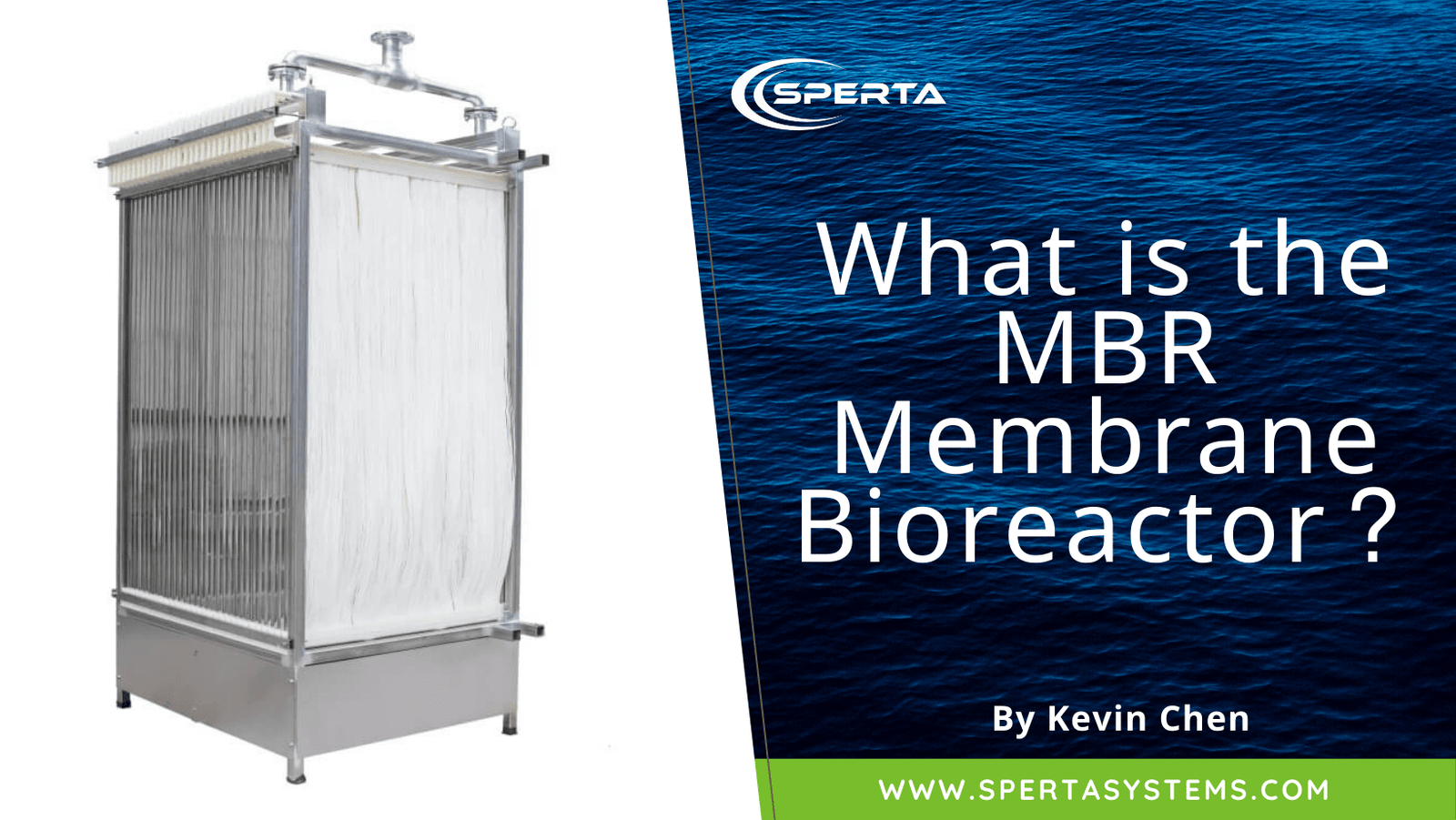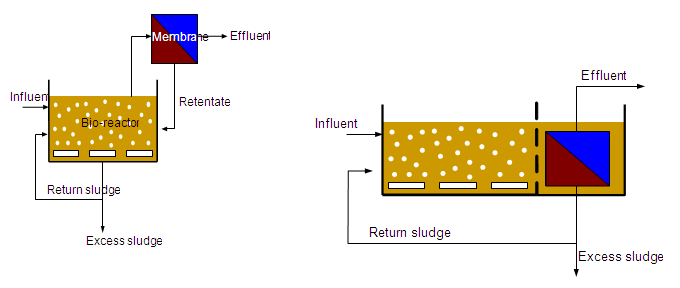Why Membrane Bioreactor Solutions Are Ideal for Sustainable Water Treatment
Why Membrane Bioreactor Solutions Are Ideal for Sustainable Water Treatment
Blog Article
Membrane Bioreactors Clarified: Efficient Solutions for Clean Water
Membrane layer bioreactors (MBRs) have actually arised as an advanced solution for dealing with journalism obstacles of wastewater therapy. By incorporating organic procedures with advanced membrane filtration, MBRs not only enhance the quality of treated water but likewise decrease the spatial demands of treatment facilities. As environmental issues increase, the function of MBR innovation in promoting sustainable water monitoring comes to be progressively significant. The complexities of their operation, benefits, and possible applications merit a closer evaluation to fully understand their influence on the future of water therapy.

What Are Membrane Bioreactors?
Membrane layer bioreactors (MBRs) are sophisticated wastewater treatment systems that incorporate biological degradation procedures with membrane filtration modern technology. This combination enables the reliable removal of impurities from water, making MBRs a favored option in numerous applications, including local wastewater treatment and industrial effluent administration.

Among the important advantages of MBRs is their capability to produce top notch effluent, typically ideal for reuse in irrigation or commercial processes. Additionally, MBRs need a smaller sized footprint contrasted to standard treatment systems, making them excellent for urban setups where room may be limited.
In addition, MBRs can efficiently take care of varying influent tons and are much less at risk to the effects of hazardous shocks. These features add to their growing appeal as a lasting service for resolving the enhancing need for tidy water while lessening environmental effects.
Exactly How Membrane Layer Bioreactors Work
While the procedure of membrane bioreactors (MBRs) may seem complex, it fundamentally revolves around the harmony in between biological procedures and membrane layer filtering. MBRs integrate a biological therapy procedure, typically turned on sludge, with a membrane layer separation unit to treat wastewater effectively.
In an MBR system, wastewater is very first presented right into a bioreactor where microbes weaken natural issue and various other impurities. The organic task lowers the focus of toxins while advertising the development of biomass. Following this organic therapy, the blended liquor goes through membrane filtration, which can be microfiltration or ultrafiltration, depending on the desired effluent quality.
The membranes act as a physical barrier, permitting water and tiny solutes to pass while preserving put on hold solids and bigger molecules. This makes it possible for the system to keep a high focus of biomass within the reactor, enhancing the therapy performance.
Additionally, the constant separation of cured water from the biomass promotes a portable style and reduces the footprint of the therapy facility. Overall, the mix of organic deterioration and membrane filtering in MBRs leads to effective and dependable wastewater treatment, guaranteeing high-quality effluent ideal for different applications.
Advantages of MBR Modern Technology
One of the key benefits of membrane bioreactor (MBR) modern technology is its capability to generate top notch effluent with a substantially decreased impact compared to standard wastewater treatment approaches. MBR systems efficiently incorporate biological therapy and membrane purification, resulting in premium removal of impurities, including put on hold solids, pathogens, and organic issue. This capability causes effluent that frequently fulfills or exceeds rigid regulatory requirements for reuse and discharge.
In addition, MBR technology enables higher biomass concentrations, which improves the therapy efficiency and minimizes the called for reactor volume. This small layout is particularly helpful in city areas where space is limited. The functional adaptability of MBR systems also implies they can adjust to differing influent top qualities and flow rates, making them suitable for a vast array of applications.
Moreover, the minimized sludge manufacturing related to MBR procedures adds to lower operational and maintenance costs. The membranes work as a physical barrier, lessening the find more danger of obstructing and making it possible for longer functional durations in between cleansing. On the whole, the benefits of MBR modern technology make it an attractive solution for sustainable wastewater treatment, addressing both environmental concerns and the need for efficient resource monitoring.
Applications of Membrane Layer Bioreactors
With their convenience and performance, membrane layer bioreactors (MBRs) discover applications throughout different industries, including municipal wastewater treatment, commercial procedures, and even water improvement. In community setups, MBRs give a portable remedy for dealing with wastewater, efficiently removing contaminants while at the same time producing high-quality effluent that fulfills rigorous regulative standards. This makes them particularly ideal for areas with limited room.
In commercial applications, MBR technology is made use of for dealing with process water, particularly in markets such as food and drink, pharmaceuticals, and petrochemicals. These industries take advantage of MBRs' capability to handle high natural tons and their effectiveness in recouping important sources from wastewater, such as nutrients and water.
Additionally, MBRs play an important role in water improvement initiatives, making it possible for the reuse of treated wastewater for watering, industrial procedures, and even as safe and clean water after additional therapy (Membrane Bioreactor). Their effectiveness in removing microorganisms and pollutants makes them a trustworthy choice for making certain water quality in numerous reuse applications
Future of Water Treatment Solutions
The future of water treatment remedies is poised for transformative improvements driven by technological advancement and increasing environmental understanding. As global water shortage ends up being a pushing issue, new techniques, including membrane bioreactor (MBR) systems, are established to play a pivotal function in improving the performance and sustainability of water treatment processes.
Emerging modern technologies such as expert system and artificial intelligence are expected to enhance therapy procedures, enabling real-time monitoring and predictive maintenance. This will enhance the general integrity and performance of water therapy facilities. Improvements in membrane layer products, such as graphene and nanofiltration, assure to raise great site permeation prices and lower fouling, leading to reduced power intake and functional expenses.
Furthermore, the combination of sustainable energy resources right into water treatment plants will add to greener techniques. The circular economic climate model will certainly likewise acquire grip, urging the recovery of valuable sources from wastewater, such as nutrients and energy.
Conclusion

Membrane bioreactors (MBRs) have arised as an advanced remedy for dealing with the pushing difficulties of wastewater therapy. By integrating organic procedures with sophisticated membrane layer filtration, MBRs not just boost the high quality of cured water but likewise lower the spatial requirements of therapy centers.One of the essential benefits of membrane layer bioreactor (MBR) technology is its capability to generate premium effluent with a significantly minimized impact contrasted to conventional wastewater treatment approaches.With their versatility and efficiency, membrane layer bioreactors (MBRs) locate applications throughout various industries, consisting of metropolitan wastewater treatment, industrial processes, and even water improvement.In verdict, membrane bioreactors represent a considerable improvement in wastewater therapy modern technology, incorporating biological processes with efficient membrane purification to produce premium effluent.
Report this page